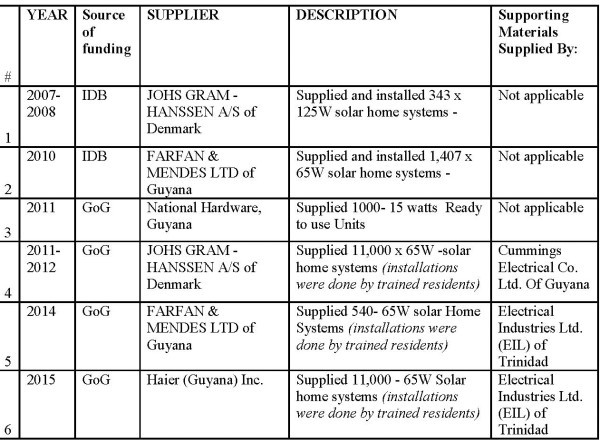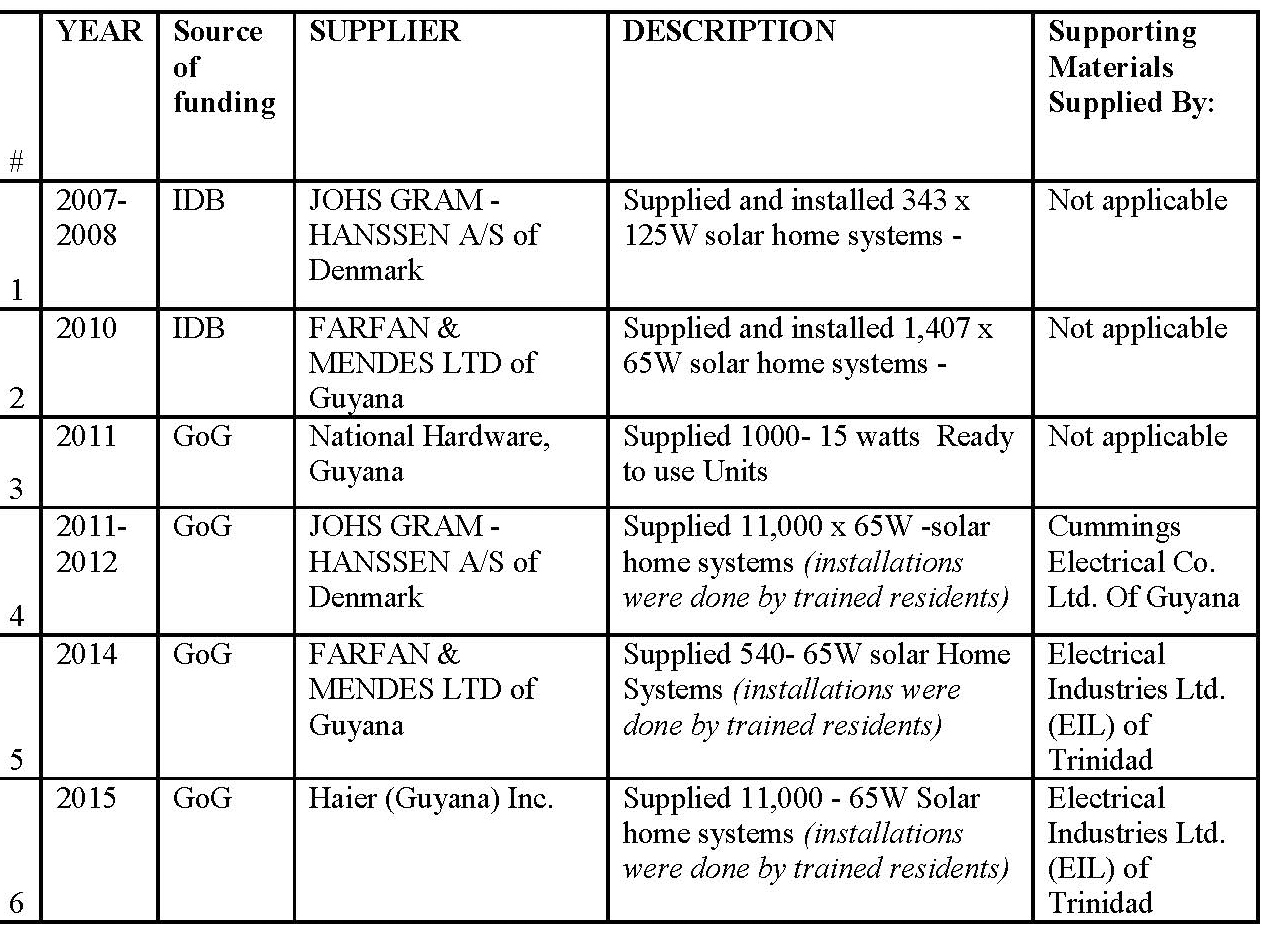Dear Editor,
I write with reference to the letter ‘Guyana should go solar’ from Vishnu Bisram appearing in the Stabroek News of July 16.
As the Minister responsible for electricity and energy in the preceding PPP/C administration, I welcome and encourage all well-thought-out initiatives to continue taking Guyana ‘green’ which was so well proclaimed in Guyana’s Low Carbon Development Strategy (LCDS). Aspirations and good intentions are commendable; at the same time there is a need for accuracy and fair presentation; if not we shall be misguided and we shall find ourselves in a situation worse than before.
There are in the letter referred to, a number of often ‘quoted statements’ with which I must take issue; the implied allegations of some sort of corruption are just not true and other statements mislead the public.
In paragraphs 7, 8, 9, 10 of his letter Mr Bisram repeated innuendos of preference in the award of contracts during the PPP/C administration, specifically in this letter the photo-voltaic solar energy, electricity lighting projects, but the readily verifiable facts tell a very different story, and we should care about facts.
Allow me to highlight a few sections from the paragraphs mentioned above:
“It [the PPP/C government] had its favourite contractors out of China”;
“The contracts largely went to the foreigners”;
“A Trinidad Company that produced solar energy more cheaply than the Chinese was not ever considered.” Comment: No such company was known to us.
And “Other Caribbean servicing companies were not given preference even if more economical and less costly.” Comment: If they were more economical and less costly, there would be no call for preference.
Before commenting further on the above, let us look at the table of major contract awards of the PV SHS (Solar Home Systems) projects.

All projects except # 3 were arrived at by a process of open international bidding. See the names of the suppliers. No preference for ‘favourite contractors out of China’. Whilst we were aware or believed that all the solar panels and many of the batteries and lamps came out of China, the winners of the contracts sourced as best known to them. No surprise when they sourced from China; China has been in recent years the factory to the world, as Japan, the USA and the UK have been at earlier times. Many of the cables and controllers were sourced by the awardees from the USA and Europe, hence the large supply projects # 4, 5 and 6 were broken into different lots according to items and likely sourcing.
Note also the awards to local and regional companies.
These projects were implemented according to the standard procedures of NPTAB.
Yes, Guyana must continue to take advantage of opportunities to develop ‘green’ Guyana as we meet our needs and in our service. PV solar and wind technologies have been on a path of rapid improvement (declining equipment costs) over the last two decades but they suffer from non- continuity and non- predictability in their generation. Over periods of about a year, they average about 40% generating time, including moment to moment variations for which the grid to which they are connected must compensate. There remains the need for a fossil fuelled (including any nuclear or hydro power) grid that can take the full demand at any time or capital costs could be doubled with the installation of various amounts of energy/electricity storage.
Guyana did pursue some years ago an invitation from the Government of Japan to developing countries to apply for grants of demonstration utility level PV Solar Farms (1 to 3 MW). However, we were advised later that this aid programme was suspended as ‘tightness’ had developed in the Japanese government budget.
As may be recalled we have been pursuing an economic wind farm at Hope Beach, East Coast Demerara. Recall the articles in the papers and pictorial impressions of how it might look.
I could not be as nonchalant as Mr Bisram about the apparent decision of the present government not to continue the development of the Amaila Falls project. Of the ‘green’ energy electricity alternatives hydro power has been the longest developed, most mature, most predictable on the half to one year time-scale, the closest to fossil fuel electricity generation. The Amaila Falls project as it was developed by the PPP/C administration remains the most attractive electricity generation project for Guyana. About the best that could be found on first cost, financing cost and average lifetime costs of electrical energy generated.
Mr Bisram seems to be a champion for household PV installations fed into our GPL grid. He recognizes the historical and ongoing need for subsidies to house owners on installation, but does not mention the premium often paid also, one way or another on energy fed into the grid.
In our circumstances in Guyana, an already existing overall subsidy of about 20% (not to GPL but to us customers of GPL), high losses particularly non-commercial (our high propensity to abstract electricity without paying for it, about 16% v about 2% in most developed and respectable countries) grid feed-in policies could generate many questions; they may be open to the public at large but who would be able to take advantage of it and enjoy the subsidies assuming that there are subsidies?
Mr Bisram may find that a door would have been opened to many appearances, perceptions and allegations of corruption, but perhaps one cannot do things without ‘appearances’ and people perceiving what they will.
Yours faithfully,
Samuel Archibald Anthony Hinds
Former Prime Minister of Guyana






